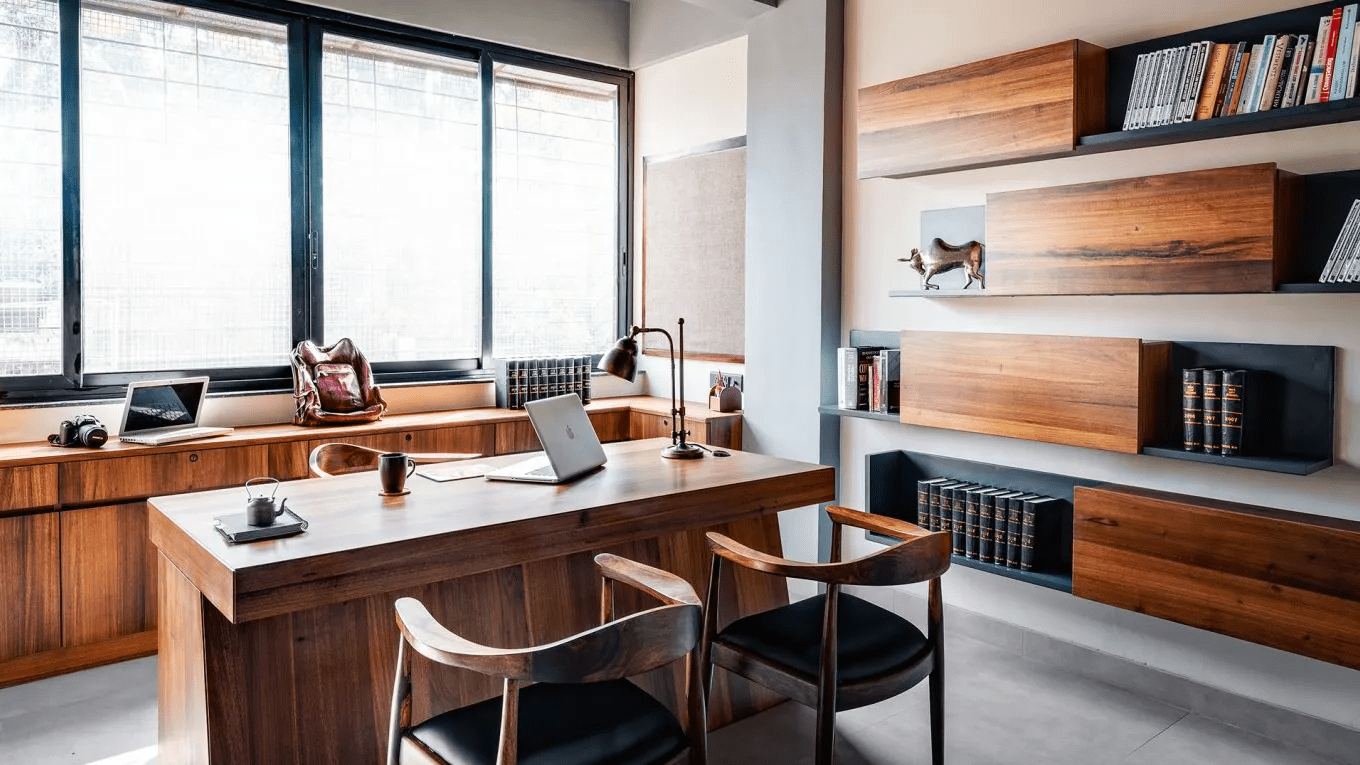
Designing an advocate’s office requires an atmosphere that exudes professionalism, trust, and sophistication. Unlike typical offices, an advocate’s workspace must seamlessly blend functionality, discretion, and aesthetics in the right proportions. This blog delves into how to achieve the ideal interior design for an advocate’s office, tailored to meet these distinct requirements.
Essential Aspects of Advocate Office Interior Design
Reception and Waiting Area

The waiting room significantly influences the client’s overall experience. It’s essential to convey a professional yet inviting atmosphere. Comfortable seating plays a crucial role in helping anxious clients relax, especially when paired with calming colors and clean lines. Thoughtfully chosen artwork and decor can further enhance this environment, creating a friendly space that doesn’t overwhelm the senses of visitors.
Private Consultation Rooms

Confidentiality is essential, so consultation rooms must be designed with this principle in focus. This entails incorporating soundproof walls, floors, and doors to prevent the leakage of sensitive information. The room should feature comfortable yet professional seating, a spacious desk, and adequate lighting to maintain a professional atmosphere.
Conference Room Design

The conference room is often the most utilized area in many advocate office interiors, serving as the venue for client meetings, team discussions, and presentations. A well-designed professional conference room typically includes a large table, comfortable seating, and modern technology for presentations or video conferencing. Incorporating a clean, minimalist office design with neutral tones enhances the professional atmosphere by minimizing distractions.
Segregation of Suitable Furniture and Decor
Functional Furniture

In this setting, the functionality of the furniture takes precedence over its appearance. Since advocates often spend long hours at their desks, ergonomic chairs and spacious workstations are essential. Filing cabinets, bookshelves, and storage units should be incorporated in a way that avoids a cluttered feel. High-quality materials such as leather chairs and hardwood desks are recommended to enhance the office’s professional image.
Lighting Solutions

Lighting is crucial in any office, particularly in an advocate’s office, where it helps set the right atmosphere. Maximizing natural light is key to fostering a welcoming and productive space. Incorporating desk lamps, floor or pendant lights, and overhead fixtures ensures balanced lighting throughout the office, avoiding harsh or distracting glare.
Aesthetic Choices

While functionality is key, aesthetic choices are equally important. A subdued color palette, featuring blues, greys, and earthy tones, often helps create a calm and trustworthy atmosphere. Strategically placed artwork, whether legal-themed or abstract, can enhance the office’s overall aesthetic. Additionally, incorporating plants adds a natural element that softens the corporate environment.
Conclusion
Designing an advocate’s office requires careful attention to the unique needs of legal professionals. Striking a balance between aesthetics and functionality, while ensuring the space reflects professionalism, is key to instilling client confidence and fostering a productive work environment for advocates.
From welcoming and comfortable reception areas to private offices equipped with modern furnishings and the latest technology, thoughtful interior design can greatly enhance both the efficiency of an advocate’s practice and the overall client experience.
